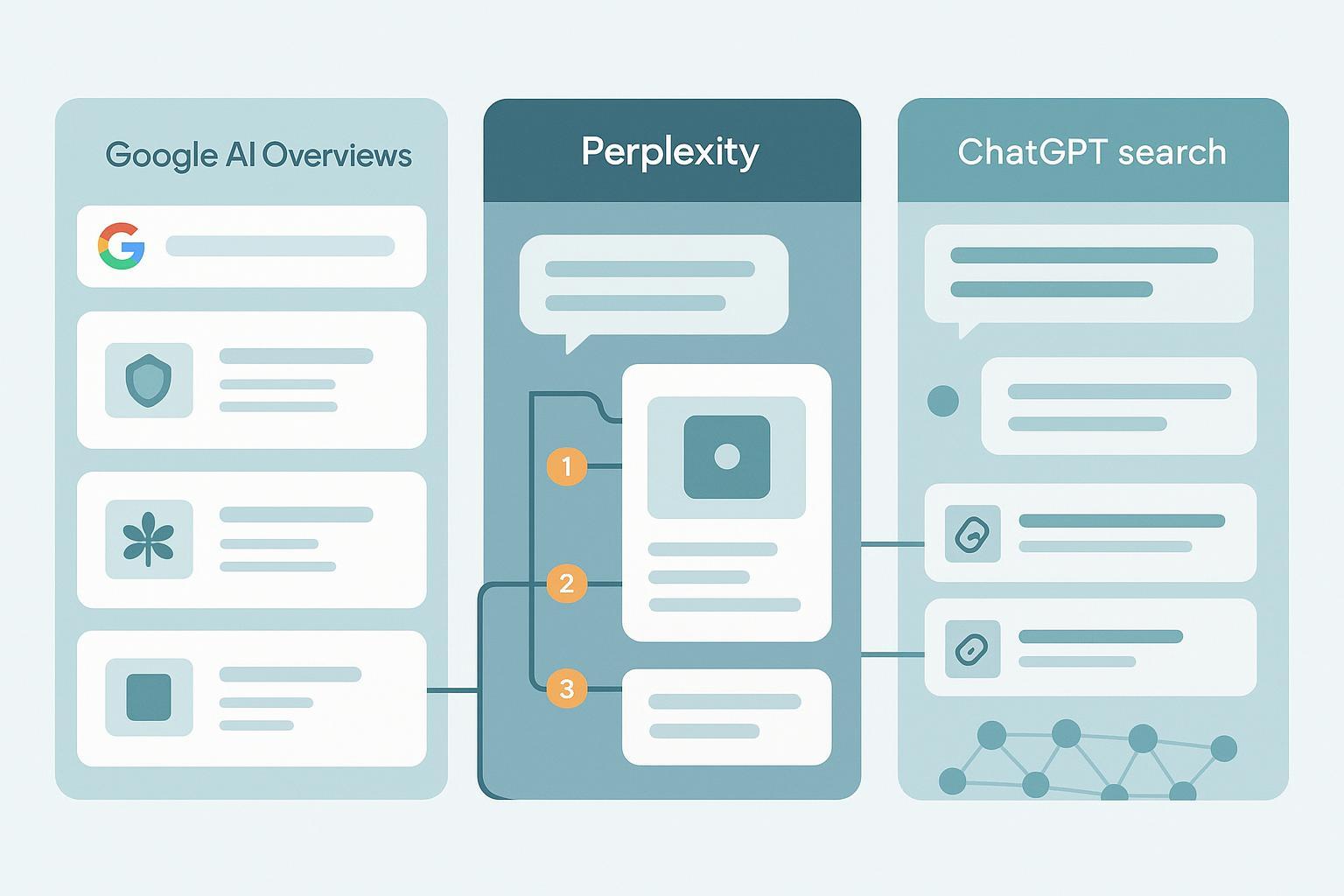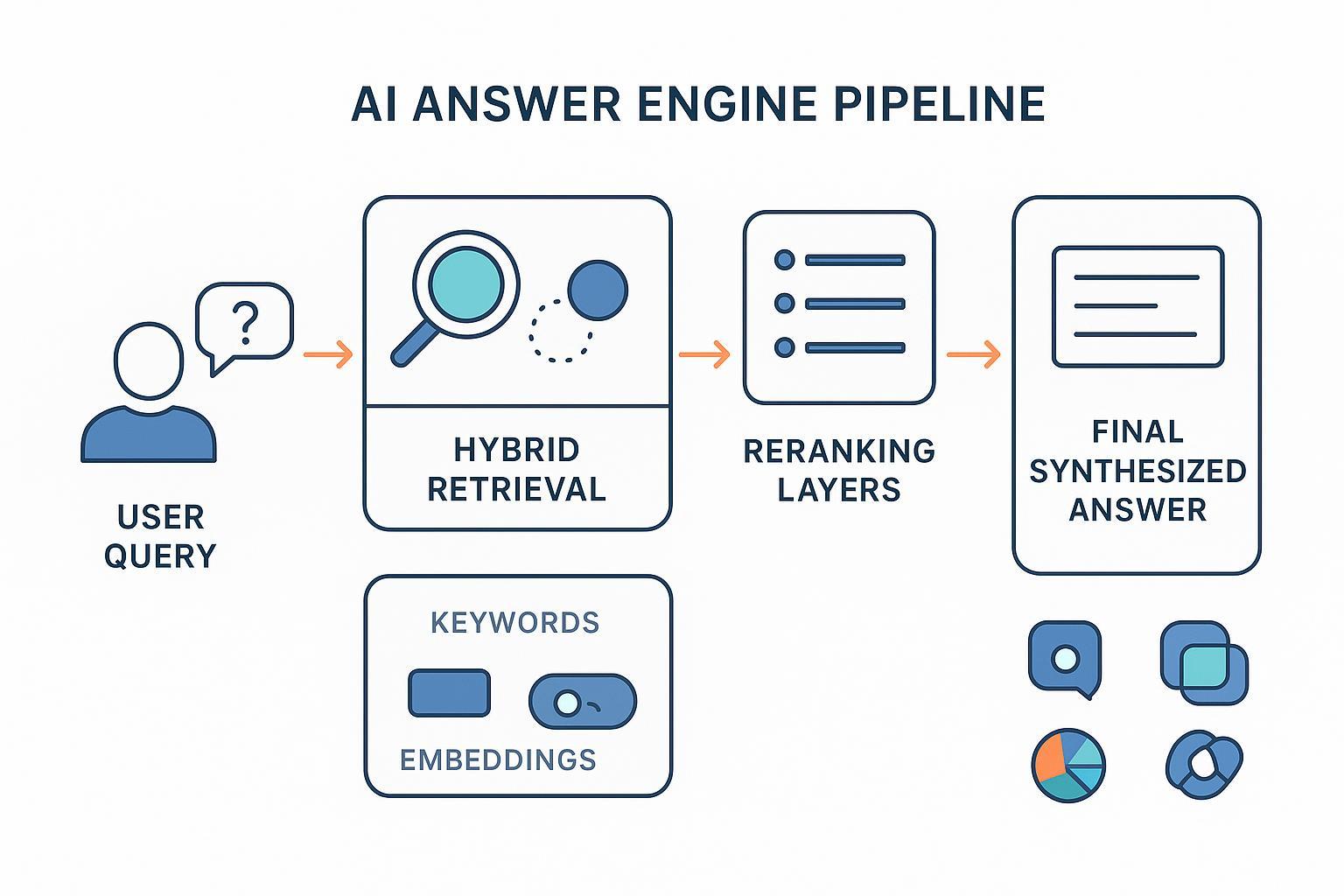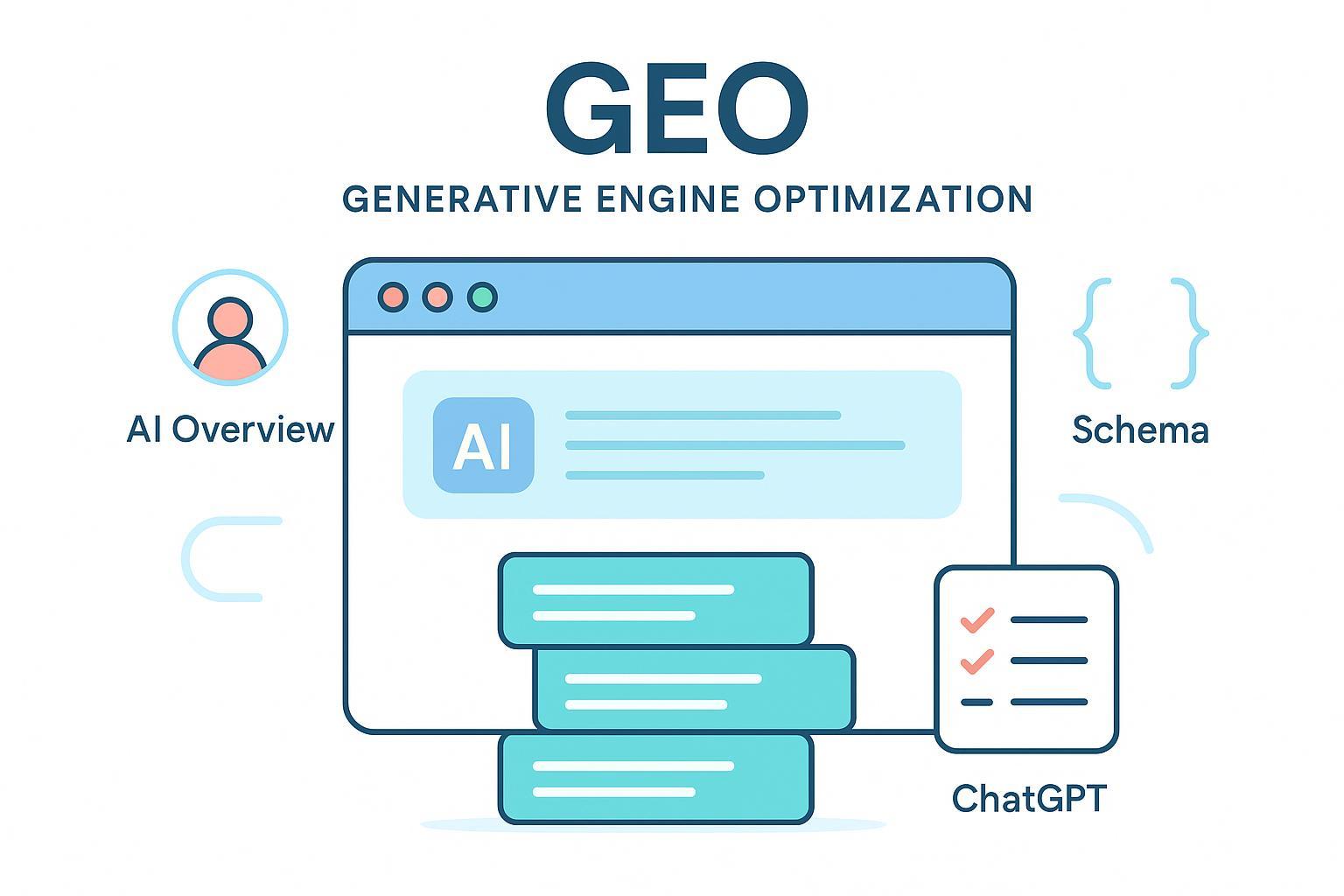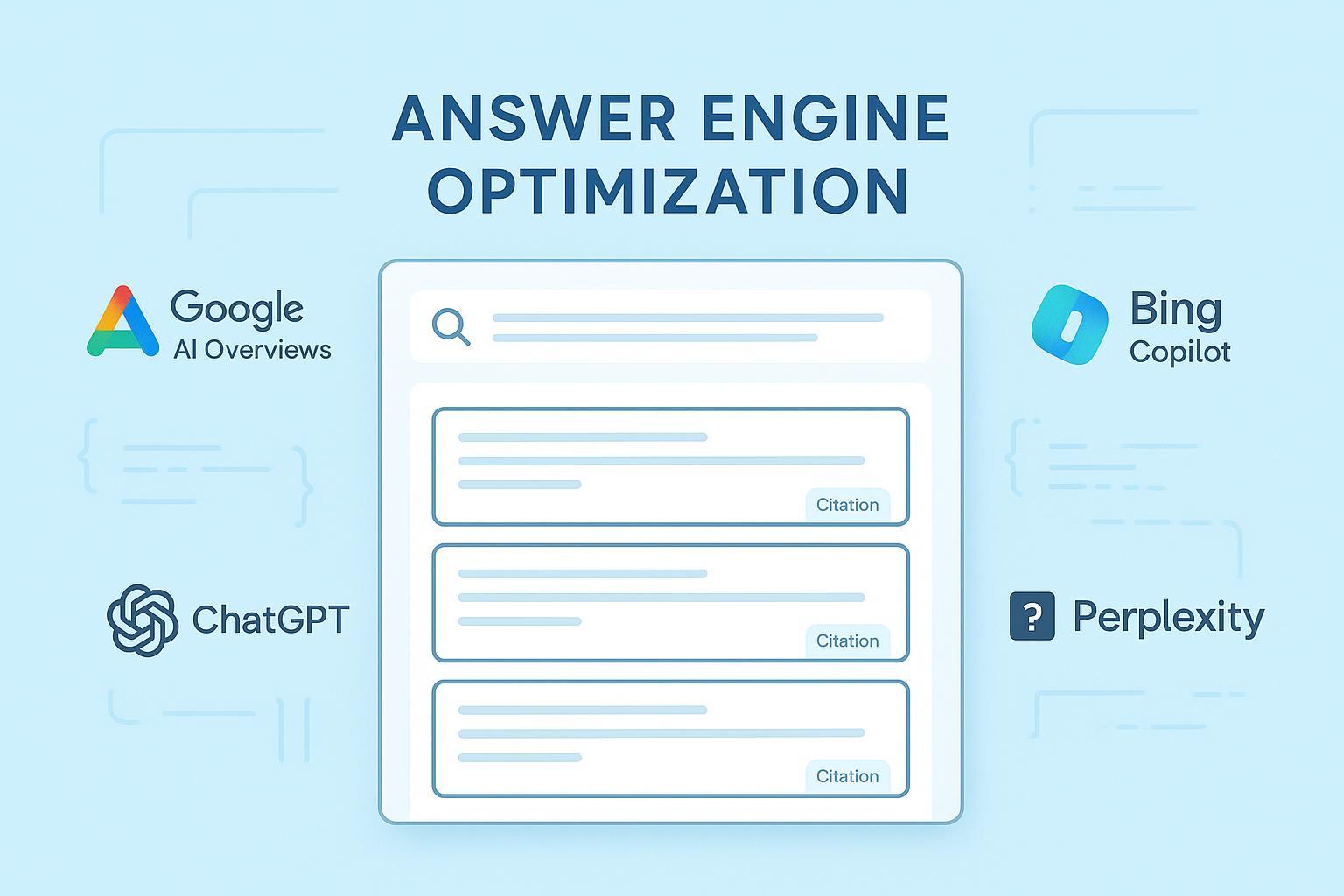Structured Data & Schema Markup Best Practices for AI Search Visibility
Professional guide to implementing schema markup for AI search visibility. Covers workflows, KPIs, troubleshooting, and industry-proven strategies for 2025.

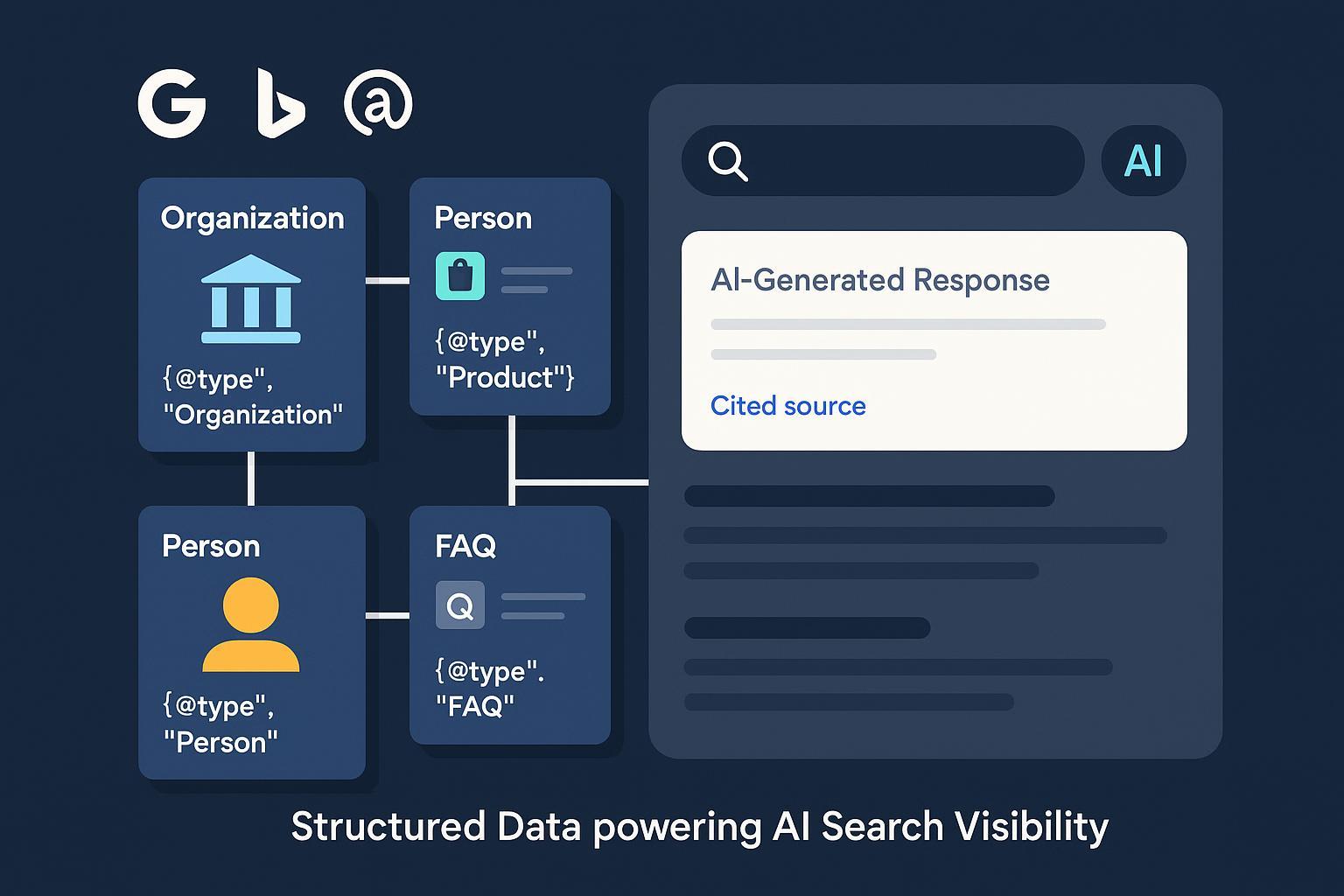
If you want AI search to understand, cite, and recommend your brand, you need to speak its language. In 2025, that language is clean, consistent Schema.org structured data delivered as JSON-LD—and kept in lockstep with your visible content. Google reiterates that structured data helps it understand page content and recommends JSON-LD for ease of implementation, as stated in the updated guidance in 2025 in the Google “Intro to structured data” documentation. At the same time, Google’s AI surfaces (AI Overviews/AI Mode) emphasize helpful, people-first content over markup alone, per the May 2025 post on Google Search Central’s “Succeeding in AI search”. The takeaway: structured data is a controllable lever that can improve machine understanding and sometimes correlates with better AI visibility, but it’s not a silver bullet.
Below is the playbook I use on client sites to make structured data pay off across Google, Bing/Copilot, and citation-forward engines like Perplexity—step by step, with trade-offs and validation built in.
What “success” looks like in AI search (and how to measure it)
Traditional SEO metrics still matter, but AI search introduces new signals you should deliberately track:
- AI Overview presence rate (Google): For a defined query set, how often does an AI Overview appear—and how often is your domain cited in it? Google doesn’t expose this in Search Console; you’ll need manual sampling or third-party monitors. The 2025 guidance focuses on helpful content; structured data is supportive, not a prerequisite, as noted in Google’s AI features documentation.
- LLM citation frequency: Perplexity displays citations by design, creating a measurable signal for “how often your site is referenced,” as described in the September 2025 overview on SERP Intelligence about Perplexity’s citation-backed answers.
- Rich result coverage and errors: For supported types (e.g., Product), use Search Console reports to confirm eligibility and to catch errors early.
- Engagement proxies: CTR changes where rich results appear, on-page engagement from AI-referred sessions when identifiable, and conversions influenced by AI surfaces.
If you’re building a broader AI visibility program, it helps to anchor your KPIs in an entity-first approach. For background on how entity clarity supports AI answers, see this primer on what is Generative Engine Optimization.
Prioritize where schema will move the needle
Not every template deserves immediate markup. Start where the business impact is clearest.
- Tier 1 (do these first):
- Product detail pages, service/location pages, and expert bios (authors/subject-matter experts)
- Authoritative guides and support articles that often answer “how” or “which” questions
- Tier 2:
- Category hubs and FAQ hubs
- Blog posts and secondary pages that support your core entity graph
The goal is twofold: make your key entities (Organization, People, Products/Services) unambiguous to machines, and provide structured answers to common questions.
Implementation workflow (that actually survives real-world changes)
Here’s the end-to-end, battle-tested workflow I recommend.
1) Choose JSON-LD and enforce content parity
- Format: Use JSON-LD. Google states this is generally easiest to implement and maintain in the “Intro to structured data” documentation.
- Parity rule: Every field in your schema must be truthful to visible content. Violations are a common reason for problems noted in the Google Structured Data Guidelines. Bake this into your editorial QA.
2) Build a connected entity graph
- Sitewide Organization: Define a single Organization entity with a stable
@id(e.g.,https://example.com/#organization). Includename,url,logo,contactPointas available, plussameAsto authoritative profiles (LinkedIn, Crunchbase, Wikidata). - People (authors/executives): Each person gets a stable
@idandsameAslinks (e.g., LinkedIn, professional associations). Connect authors to articles viaauthorand to Organization viaworksFor. - Products/Services: Reference the Organization
@idviabrandormanufacturer. Use GS1 identifiers where applicable. - Topical connections: Use
aboutandmentionsto link content to concepts/entities you cover. Keep@idURIs consistent and avoid orphaned nodes.
3) Delivery options
- CMS templates: Preferred for scale and stability. Most major CMSs have solid schema plugins or support templated JSON-LD.
- Headless CMS/SSR: Inject JSON-LD server-side in templates or via edge functions for performance and consistency.
- Google Tag Manager (GTM): Acceptable for small pilots or non-critical pages, but avoid long-term reliance; template-level injection is more reliable and easier to test.
4) Validation and regression-proofing
- Validate new/changed templates in Google’s Rich Results Test before shipping.
- Add schema unit tests to your CI pipeline. For example, assert required properties on Product templates and fail builds if missing.
- Maintain a schema registry: a living document listing each template, expected types, required/recommended properties, owner, and last QA date.
Practical code examples (copy, adapt, validate)
Below are trimmed examples. Always extend with properties relevant to your use case and ensure parity with on-page content.
Product (with offers and identifiers)
{
"@context": "https://schema.org",
"@type": "Product",
"@id": "https://example.com/product/widget-123#product",
"name": "Acme Smart Widget 123",
"image": [
"https://example.com/images/widget-123-front.jpg"
],
"description": "A durable smart widget for home and office.",
"sku": "WID-123",
"gtin13": "0012345678905",
"brand": {
"@type": "Organization",
"@id": "https://example.com/#organization"
},
"offers": {
"@type": "Offer",
"priceCurrency": "USD",
"price": "199.00",
"availability": "https://schema.org/InStock",
"url": "https://example.com/product/widget-123",
"itemCondition": "https://schema.org/NewCondition",
"shippingDetails": {
"@type": "OfferShippingDetails",
"shippingRate": {
"@type": "MonetaryAmount",
"value": "0",
"currency": "USD"
}
}
},
"aggregateRating": {
"@type": "AggregateRating",
"ratingValue": "4.6",
"reviewCount": "128"
}
}
For Product eligibility requirements on Google—including updated return policy guidance in 2025—consult the Google Product structured data documentation and note the March 2025 update on country-level return policy details covered by Search Engine Journal’s report.
FAQPage (for common pre-sales or support questions)
{
"@context": "https://schema.org",
"@type": "FAQPage",
"@id": "https://example.com/support/product-faq#faq",
"mainEntity": [
{
"@type": "Question",
"name": "Does the widget support Wi‑Fi 6?",
"acceptedAnswer": {
"@type": "Answer",
"text": "Yes. All models manufactured after 2024 support Wi‑Fi 6 with WPA3."
}
},
{
"@type": "Question",
"name": "What is the return window?",
"acceptedAnswer": {
"@type": "Answer",
"text": "You can return any item within 30 days in the U.S. and 45 days in the EU, subject to our policy terms displayed on this page."
}
}
]
}
Ensure FAQ content is visible and matches markup, as required by the Google FAQPage guidelines.
Evidence from 2025: Why quality schema still matters (with caveats)
- In a September 2025 controlled test, pages with high-quality schema outperformed pages with poor or no schema; notably, the well-marked page was included in AI Overviews, according to Search Engine Land’s experiment on schema and AI Overviews.
- However, other tests observed no impact on AI inclusion from adding schema alone, reminding us that multiple signals drive AI surfaces, as noted in a September 2025 SERoundtable summary of null-effect tests.
My practice: treat schema as a differentiator that increases machine confidence and extractability, while optimizing the underlying content for helpfulness and intent satisfaction.
Vertical playbooks (what to implement, by industry)
- Ecommerce:
- Product with Offer, price/availability freshness, identifiers (GTIN), and merchant return policy. Align with Merchant Center feed to avoid conflicts. Validate frequently.
- Local services and law firms:
- LocalBusiness with NAP consistency,
geo,openingHours. Use Service or LegalService for offerings. Create robust Person schema for attorneys withsameAsto bar associations andalumniOf, and link bios to authored articles.
- LocalBusiness with NAP consistency,
- B2B/SaaS:
- SoftwareApplication for product pages (include
applicationCategory,operatingSystem,offers). Article/HowTo for documentation and support. Connect case studies with Review/Rating where public and compliant.
- SoftwareApplication for product pages (include
- Healthcare:
- MedicalOrganization and medicalSpecialty; reinforce E-E-A-T through explicit author/reviewer markup and visible credentials. Validate rigorously due to YMYL implications.
Always confirm current eligibility and constraints in the Google Structured Data Guidelines.
Advanced techniques for AI-era visibility
- Connected knowledge graph at scale: Use stable
@idanchors and a consistent pattern (e.g.,/#organization,/path#person-jane-doe) so that your Organization, People, Products, and Articles interlink cleanly. This makes it easier for AI systems to traverse relationships. - Freshness for shopping content: Keep price and availability synchronized; Microsoft has highlighted the role of structured product data and fast indexing changes. For rapid updates, consider IndexNow for inventory and offers, as outlined in the May 2025 Bing Webmaster blog on IndexNow for shopping and ads.
- Schema automation: In headless setups, generate JSON-LD server-side from your canonical product/service data models. Add linting to ensure required fields and identifier formats (e.g., GTIN, ISBN) are always present where applicable.
- Role-based editorial prompts: Guide writers to provide the facts that power schema: publish dates, authorship, return windows, materials/tools for HowTo, and precise product specs.
Validation and monitoring (make it routine)
- Pre-publish checks: Validate JSON-LD for every new or changed template in the Rich Results Test.
- CI safeguards: Add automated tests that assert required properties and validate
@idpatterns. Fail builds on schema regressions. - Scheduled audits: Weekly checks for pages touched that week; monthly reviews of Search Console rich result reports; quarterly full-site schema crawl and JSON-LD linting.
- Policy watchlist: Google deprecates and adjusts schema eligibility over time (e.g., 2025 removals from rich result reporting). Track these changes and adjust expectations; see coverage like the September 2025 note on reporting removals in Search Console in Search Engine Land’s update and validate current support in official docs.
Troubleshooting: fast fixes for common failures
- Parity violations: If your schema says “InStock” but the page shows “Out of stock,” fix content or schema immediately and add a parity check to your publishing workflow.
- Deprecated or unsupported types: Revisit the Google features pages before large rollouts. Don’t pin business cases on deprecated types.
- Conflicting objects: Two Product entities on one PDP can confuse parsers. Ensure only one primary object per page unless multiple distinct items are actually sold.
- Orphaned
@ids: If you declare a Person in an article, also declare them on their bio page and link via the same@id. - Stale offers and return policies: Update feeds and site content together, and reflect updates in schema. Consider syncing from a single source of truth.
Measuring impact without fooling yourself
- Baseline: Record current AI Overview presence rate and Perplexity citation frequency for a fixed query set.
- Intervention: Roll out schema improvements in waves (by template or section) to create natural A/B comparisons.
- Observe: Track rich result eligibility, organic CTR where relevant, and any lift in AI citations over 2–6 weeks. Include seasonality notes and major site changes in your annotations.
- Decide: Keep, iterate, or roll back changes based on results—not assumptions.
For broader context on entity-first workflows and AI search, you can explore additional AI visibility workflows as you formalize your internal playbooks.
Evidence-informed perspective on Bing/Copilot and other engines
While comprehensive Microsoft whitepapers detailing schema’s role in Copilot’s LLMs aren’t public, Microsoft representatives have indicated that schema helps Bing’s understanding, and Microsoft’s own webmaster posts emphasize structured product data and freshness. Their May 2025 article on IndexNow enabling faster updates for shopping content is a practical lever you can use today.
Engines like Perplexity that always show citations offer a cleaner line of sight to whether your structured content and entity clarity are paying off. Track citation frequency over time and compare against your schema rollout timeline to spot correlations, as described in the 2025 overview on Perplexity’s citation-forward answers.
Putting it all together: a repeatable playbook
- Prioritize templates that drive revenue or trust (products, services/locations, expert bios, authoritative guides).
- Implement JSON-LD with strict parity to visible content; use Organization, Person, Product/Service, and FAQ/HowTo where appropriate.
- Build a connected entity graph with consistent
@ids andsameAslinks to authoritative profiles. - Deliver markup via templates or server-side; avoid long-term GTM dependency.
- Validate changes in Rich Results Test; add CI schema tests; keep a schema registry.
- Monitor AI-native KPIs (AI Overview presence, citation frequency), rich result coverage, and engagement proxies.
- Audit quarterly for schema decay and policy changes; adjust your plan as engines evolve.
Final word
Structured data won’t guarantee inclusion in AI Overviews or any LLM response. But in 2025, quality schema is still one of the highest-ROI, controllable inputs for machine understanding—and sometimes correlates with better AI visibility. Google recommends JSON-LD and content parity, as outlined in the Intro to structured data and 2025 guidance on succeeding in AI search. Pair that with clean entity relationships, reliable delivery, and rigorous validation. Then measure what matters: presence in AI surfaces, citation frequency, and the business outcomes that follow.


